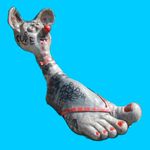- Home
- Lightroom Classic
- Discussions
- Finding and removing duplicate Images in Lightroom...
- Finding and removing duplicate Images in Lightroom...
Finding and removing duplicate Images in Lightroom Classic
Copy link to clipboard
Copied
I run LRC on my iMac a late 2020 model with 8 cores and 72GB or RAM. I update my software pretty well whenever I'm told me there are new versions available.
I have a catalog with around 80,000 images. Most images are taken using various digital cameras – I will refer to these from hereon in as my Digital Photos. The rest are scans from the prints, their negatives and the slides I took prior to 1998 when I used film cameras – I will refer to these from hereon in as my Analog Photos.
Despite my best efforts to avoid duplicates, I have accumulated many duplicate photos. You can export edited photos and then somehow re-import them, or people share photos with you via phone or some cloud file sharing service and send you back photos you had previously sent them. Or you may have old Analog Photos that you scan from old prints or the negatives they came from. The same print can end up in multiple physical paper albums and so get scanned twice. Even if there is only a single print, when you scan its long lost negative you get a duplicate.
Digital Photos have metadata so duplicates can be easily found (in theory) by using LRC to create a list based on a date range and then view that list in date order. The duplicates end up next to each other. But it is both tedious and error prone looking through hundreds of photos in the grid view and rejecting the duplicates.
Analog Photos do not have any metadata that reliably relates to when they were taken or with what camera etc, so the tedious and error prone technique I described above is not even a possibility. And it is here that I have most of my duplicates, and their multiple instances makes trying to make sense of my image stream much harder.
I recently found a utility called PhotoSweeper from https://overmacs.com/ which works just as well on the computer's file system as it does on an LRC Catalog.
It analyses the photo bitmaps (not file attributes) to arrive at its list of duplicate candidates. It then uses configurable rules/settings to identify which file to keep and which files to mark as to-be-trashed. At that point you can view these candidates with their attributes side by side and either leave the default selections or change them manually. Once you are happy with the elimination plan you press the "Trash Marked" button and hey presto they are "gone".
In the case of plain images on disk (folders not managed through photographic software like LRC), pressing "Trash Marked" sends them to the trash (where they can be recovered - or you can have them copied to a nominated folder).
In the case of LRC, when you press "Trash Marked" the marked duplicates are added to a collection called Trash (PhotoSweeper) and are also flagged as Rejected.
You can have PhotoSweeper analyse all folders in your LRC catalog or select one or more LRC folders to examine. LRC must not be running when FileSweeper is running.
I have now reduced a file system based photo collection for a friend from a jumble of 7000 images down to 5000 unique images, This took me a little less than half an hour and was my way of learning PhotoSweeper - yes I did make a backup copy of the original list.
I have removed around 900 duplicates from 2 decades of Analog Photos in my LRC Catalog just as easily.
This is a superb tool and what's more I wrote to the support desk with a longish list of questions and had a very helpful and comprehensive response within hours.
A feature I have not yet tried is to identify "similar photos" so that I can get rid of those shots where I held the shutter down and have dozens of nearly identical images that are not good enough but I have never taken the time to remove.
Have something to add?
Find more inspiration, events, and resources on the new Adobe Community
Explore Now